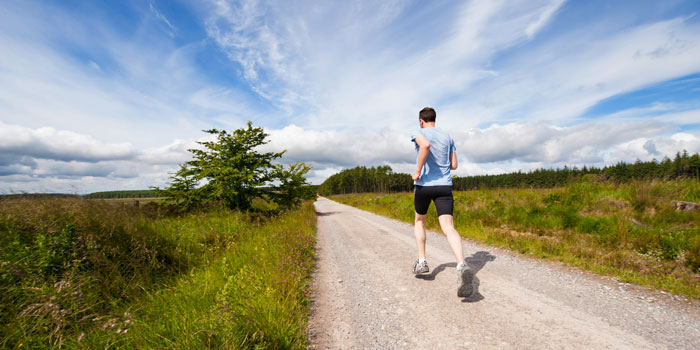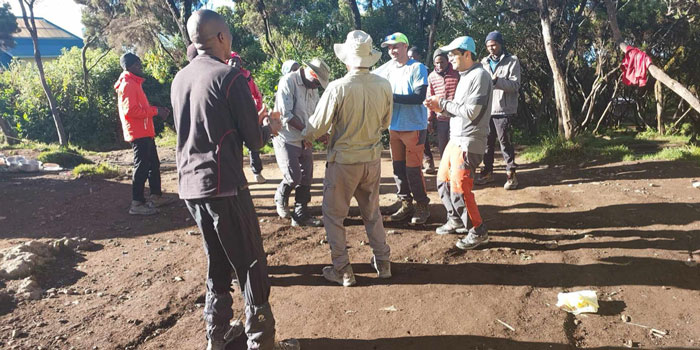Prosper, Mountain Guide | 17/05/2024
The Ultimate Guide for Your Preparation for Climbing Kilimanjaro
Get ready to conquer Kilimanjaro with our ultimate guide. Find expert tips on training, acclimatization, and cultural understanding.
Climbing Kilmanjaro is a challenging yet rewarding adventure that requires thorough preparation, to ensure your safety, increase the chances of reaching the summit, and enhance your overall experience. This guide will walk you through essential steps, from physical training and understanding of the mountain to acclimatization and mental readiness.
UNDERSTANDING MOUNT KILIMANJARO
Mount Kilimanjaro is Africa's highest peak, towering at approximately 5,895 meters / 19,341 feet. Its stratovolcanic cone stands majestic, offering a challenging yet awe-inspiring climb for adventurers worldwide. Due to its varying altitudes, the mountain boasts unique ecosystems, featuring no less than five distinct climate zones: cultivated land, rainforest, heath, moorland, and alpine desert. They all showcase diverse flora and fauna, making the journey to the summit a truly remarkable experience.
Kilimanjaro presents several routes to the summit, each with its own allure and challenges. Understanding the characteristics and nuances of these routes is crucial for the climbers embarking on the adventure.
The Marangu Route, known as the 'Coca-Cola Route', is one of the most popular, offering hut accommodations as the only route, and a gradual ascent. Another favorite is the Machame Route, also called the 'Whiskey Route' and renowned for its scenic beauty and varied terrain. Other routes like the Lemosho, Rongai, Umbwe, and Northern Circuit all provide different perspectives and challenges, catering to a range of preferences and fitness levels.
Get an overview of all Kilimanjaro routes and their characteristics.
PHYSICAL PREPARATION
Physical fitness plays a crucial role in the success and safety of climbing Kilimanjaro. The altitude, steep terrain, and long hours of hiking demand a high level of cardiovascular endurance, strenght, and overall fitness. Therefore, a well-rounded training regimen encompassing cardio, strength, and endurance exercises is essential to prepare the body for the rigors of the climb.
Cardiovascular exercises such as running, cycling, and hiking help build endurance and improve lung capacity, crucial for coping with the reduced oxygen levels at higher altitudes. Strength training focusing on the legs, core, and upper body enhances muscle strength and stability, aiding in carrying a heavy backpack and navigating challenging terrain. Endurance exercises like long hikes with elevation gain simulate the demands of climbing Kilimanjaro and also help build mental resilience.
To gradually increase your fitness level in the months leading up to the climb, you should start with moderate-intensity workouts and gradually ramp up the intensity and duration over time. Incorporating regular hikes, progressively increasing in difficulty and duration, and cross-training with activities like swimming or yoga can prevent overuse injuries and improve overall fitness levels. Consistent training, proper rest, and listening to your body are key to reaching peak physical condition for the Kilimanjaro ascent.

MENTAL PREPARATION
Mental preparation is as vital as physical training. Climbing Africa's highest peak requires resilience, determination, and focus. To prepare mentally for such a climb, you should visualize yourself successfully reaching the summit, practice positive self-talk to stay motivated during difficult moments, and set realistic goals for each day of the climb.
Additionally, you should familiarize yourself with the potential challenges you may face, such as altitude sickness, extreme weather conditions, and physical exhaustion, and develop strategies to cope with these challenges. Building mental toughness through physical training and prior hiking experiences may also help you overcome obstacles and stay determinated throughout the climb.
ALTITUDE ACCLIMATIZATION
Altitude sickness is a common concern for climbers ascending Mount Kilimanjaro due to the rapid gains in elevation. Symptoms typically include headaches, nausea, dizziness, fatigue, and shortness of breath. Proper acclimatization is crucial to minimize the risk of altitude sickness.
To acclimatize effectively, you should ascend slowly, allowing your body time to adjust to the decreasing oxygen levels. It's essential to follow the 'pole pole' (slowly, slowly) mantra to prevent altitude-related issues. Staying hydrated by drinking plenty of water helps alleviate symptoms and supports acclimatization.
For climbers prone to altitude sickness, medications like Diamox can be beneficial. Diamox helps prevent or alleviate symptoms by increasing the excretion of bicarbonate in the kidneys, which stimulates breathing and improves oxygen levels in the blood.
By understanding altitude sickness, acclimatizing properly, and considering medications like Diamox when necessary, you can enhance your chances of a safe and successful ascent of the mountain.
CULTURAL SENSITIVITY
When embarking on the journey of climbing Kilimanjaro, it's essential to approach the experience with cultural sensitivity. Respecting local customs and traditions is paramount as it not only enriches your adventure but also fosters a harmonious connection with the communitites surrounding the mountain. Understanding and honoring the customs of the Chagga people, who inhabit the foothills of Kilimanjaro, will undoubtedly enhance your overall experience and leave a positive impact.
Interacting with the dedicated staff members who support you during the expedition requires an appreciative attitude. Simple gestures like learning a few words in Swahili, the local language, or showing gratitude for their work can go a long way in building meaningful connections. Engaging with them on a personal level, sharing stories, and showing genuine interest in their culture will for sure create a profound and memorable climb for both you and them.
Last but not least, by being conscious of your environmental impact, respecting wildlife and nature, and leaving no trace behind, you can ensure that Kilimanjaro's beauty is preserved for generations to come.
We look forward to joining you to the summit of Kilimanjaro, the tallest mountain of Africa and the largest free-standing mountain in the world.

